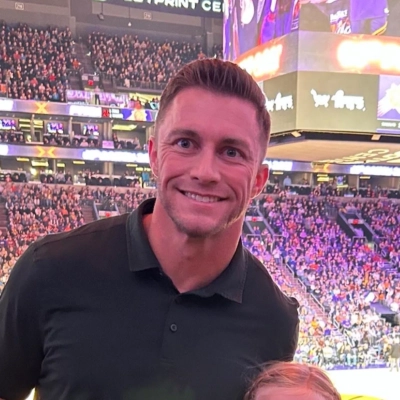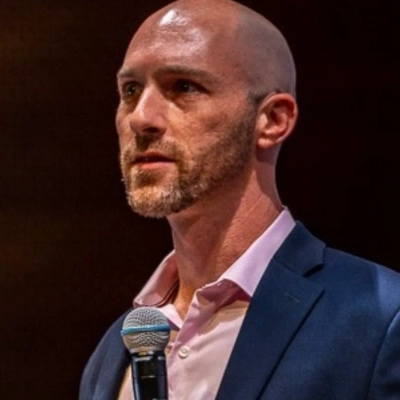24 Cash Flow Forecasting Methods That Deliver Accuracy
Discover 24 proven cash flow forecasting methods compiled from industry-leading experts who have tested these approaches across various business environments. This comprehensive guide presents practical techniques that finance professionals can implement immediately to improve forecasting accuracy. From dynamic models that sync operations with financial outcomes to rolling thirteen-week forecasts, these expert-backed strategies offer concrete solutions for building more reliable financial projections.
Dynamic Models Sync Operations With Financial Outcomes
I don't rely on a single static model. What's proven most accurate for me is building a dynamic cash flow model that syncs operational drivers with financial outcomes. Instead of just projecting revenue and expenses, we forecast based on the levers that actually move cash: sales velocity, payment terms, production timelines, payroll cycles, and vendor behavior.
It's less about guessing numbers and more about modeling how money moves through the business. For example, if a client extends their payment terms by 10 days or we increase ad spend by 15%, the model instantly shows how that impacts liquidity 45 days out. That visibility is what keeps forecasts grounded in reality.
To manage uncertainty, I bake in sensitivity toggles. I can stress-test assumptions in real time, like slower receivables or seasonality shifts. That flexibility turns forecasting into decision-making, not just reporting.

Customer Lifetime Value Creates Reliable Revenue Models
Based on my entrepreneurial background, I've found that forecasting cash flow through customer lifetime value analysis provides exceptional accuracy for long-term planning. By tracking purchasing patterns and retention rates, we transform seemingly unpredictable one-time transactions into reliable revenue models that account for customer behavior over time. This approach helps us identify potential revenue fluctuations before they occur and build appropriate contingencies into our financial projections. We've been able to significantly reduce forecast variances by focusing less on individual transactions and more on the overall customer relationship lifecycle.

Combining Historical Trends With Rolling Forecasts Works
I've found that combining historical trend analysis with a rolling forecast model provides the most accurate cash flow projections for our business. This approach proved invaluable when an unexpected influencer campaign for our Cafely product line generated sales that far exceeded our initial projections. The rolling forecast component allowed us to quickly identify the surge and adjust our marketing budget and inventory levels in real-time, maximizing our opportunity to capitalize on the increased demand.

Track Actual Payment Patterns Not Due Dates
Managing 31 rentals and flipping homes taught me that tracking when rent actually hits your account, not just when it's due, is the key to predicting cash flow. I monitor the real payment patterns. This lets me adjust quickly when a tenant is late or a rehab takes longer. It's not foolproof, but reviewing these patterns each month helps me handle the tight spots and avoid those cash flow surprises.

Map Multiple Scenarios Based On Property Conditions
After getting burned in a few markets, I changed how I forecast cash flow. I don't just look at market data anymore, I combine a property's condition with repair times and how I think it will sell. I map out both smooth and rough scenarios so I know what money I need. I keep extra cash for surprises and check my numbers weekly, which helps me spot problems early.

Track Service Movement Patterns Across Client Categories
In the SEO business, tracking how fast our services move has been the most reliable way for me to forecast cash flow. We started looking at order volume and value across different clients, which let us plan for when demand dropped. This cut down on surprise money shortages more than we thought it would, so now we can get ready for slow and busy seasons. Start with simple categories. The most obvious trends are the ones that help you plan ahead the furthest.

Triangulate Cash Flow With Inventory Metrics Monthly
I track cash flow alongside inventory assets and inventory turnover ratio monthly to see if the relationship between all three makes sense. If inventory turnover slows but cash flow remains steady, something's off—maybe we're cutting into reserves or accounts receivable are piling up. If turnover accelerates but cash flow lags, we likely have timing issues with supplier payments or customer collections.This triangulated approach catches problems that looking at cash flow alone would miss. For uncertainties and variables, I build in seasonal patterns from historical data and adjust for known upcoming changes like bulk inventory purchases or marketing campaigns. The key is that these three metrics together tell a more complete story than any single number could.

Use Rolling Cohort Models With Live Data
I stick with 12-month rolling cohort models for SaaS cash flow, especially when markets get shaky. Getting the churn assumptions right was tough, but once we hooked up live user engagement data, our forecasts finally matched reality. For the unknowns, I just run what-if scenarios. It's never perfect, but it keeps the big surprises away.
Compare Weekly Income Against Last Year's Data
For cash, I watch what comes in each week and keep a cushion for when a storm keeps people away or someone no-shows their shift. After my best server walked out, I started saving two weeks of bills. That cash saved me when the main cooler died last summer. Now I look at last year's sales to see when we get slammed, and I always bet low on what I'll make. Being wrong on the high side is a problem I don't want.

Start Budget From Zero Each Month
We stopped just carrying over our budget numbers each month and started from zero instead. When we see a gap between what we planned and what we actually spent, we figure out why - like when that grant check came in three weeks late or we had to call in extra nurses. Starting fresh each month keeps our numbers honest. I check in with finance every Tuesday now, which helps when things go sideways.

Use Conservative Hold Periods For Deal Types
One method that's worked really well for me is separating fix-and-flip deals from wholesale transactions and using a conservative 120-day hold period when projecting cash flow. After realizing how often deals take longer than expected, I now factor in all holding costs, financing fees, and unsure market absorption rates just in case things drag out. Reviewing past delays honestly showed me where I got too optimistic. I'd suggest always building extra time and cost into your forecast, and checking back each month to see where things are off track.
Adjust Models When Market Indicators Change
Here's one thing I've learned in real estate. Don't just trust historical data. When the 2008 market crashed, I stuck with conservative models, so we dodged a bullet on buying riskier properties. Now, whenever interest rates move or building slows down, we adjust the numbers. Treat your forecasts like a living thing. Small tweaks there can save you a big headache later.
Track Payments Against Project Milestones
Here's what works for my SEO agency. I track client payments against project milestones, then compare that to how we usually do with new business and churn. This helps us see cash problems coming early, especially when Google messes with its algorithm. I always keep about 30% in reserve. That way we don't get into trouble if a client suddenly leaves or a payment is late.

Verify Work Completion Before Counting Revenue
I don't use abstract corporate models to forecast cash flow. My method is simple, hands-on, and structural: I forecast cash flow based on The Hands-On Work-in-Progress (WIP) Certification Log.
Most businesses forecast based on when the invoice is sent. I forecast based on when the hands-on, structural work is verified as complete. My most accurate method is a living, digital log that tracks every single job by its percentage of completion, verified by the crew chief's hands-on inspection photos and the client's signature on the specific completion milestones.
I account for the uncertainties and variables—the things that stop cash flow, like insurance delays—by building in an immediate, structural discount to the forecast until the physical work is confirmed. I only forecast eighty percent of the final payment until the final cleanup photo is sent and signed off by the homeowner.
This method forces honesty. I don't count the money until the hands-on service is structurally complete. If a job is eighty percent done, I know I can reliably access eighty percent of that money, regardless of when the client pays. This prevents the single biggest financial chaos: relying on money that is technically owed but not yet earned by completed hands-on work. The best way to forecast cash flow is to be a person who is committed to a simple, hands-on solution that prioritizes the verifiable completion of the structural work.
Break Down Revenue By Service And Season
At Absolute Pest Management, the most reliable method we've used for forecasting cash flow is breaking it down by service type and season. Pest activity in Austin changes with the weather—rodents in the fall, termites in the spring—so we track several years of monthly revenue patterns for each category. That data gives us a clear picture of when to expect spikes or slowdowns, which helps us plan staffing, inventory, and marketing spend well ahead of time.
To account for uncertainties, we build in a 10-15% buffer on both revenue and expenses. That cushion covers unexpected costs, like extra vehicle maintenance or sudden product shortages, without disrupting operations. It's not a complicated model, but it works because it reflects real, local trends and gives us room to adapt. Predicting perfectly isn't the goal—staying prepared and steady through the ups and downs is.

Monitor Leading Indicators With Weekly Check-ins
An pproach that's been surprisingly accurate for us is tracking leading indicators instead of just lagging ones. For example, at Green Home Pest Control, we monitor things like inbound call volume, online quote requests, and average temperature trends. Those numbers usually shift two to four weeks before actual revenue changes, which gives us time to adjust staffing, marketing spend, and supply orders ahead of demand.
To manage variables, we pair that data with weekly cash flow check-ins instead of waiting for month-end reports. That rhythm keeps surprises small and decisions quick. It's a simple system, but it's turned cash flow forecasting from guesswork into something we can act on confidently—and that's made a big difference in keeping the business steady year-round.

Layer Different Income Streams With Probability Ranges
One method I rely on for forecasting cash flow is what I call a "layered timeline" approach. Real estate rarely moves in straight lines, so I track cash flow on multiple horizons to understand how different variables interact over time. For example, property management income tends to be steady, but sales, acquisitions, and maintenance costs fluctuate. By modeling those layers separately, I can see both the micro and macro trends that affect overall performance.
I also build in flexibility because the market is full of surprises. Interest rates shift, tenants move, or new regulations hit. Instead of assuming everything will go as planned, I assign probability ranges to my biggest variables: rent growth, occupancy, and capital expenses. That lets me test best, base, and worst-case scenarios before committing resources.
The key is staying close to the properties themselves. I visit sites, talk to tenants, and keep communication open with contractors and lenders. Numbers on a spreadsheet only tell part of the story; real insight comes from knowing what's happening on the ground. That mix of data discipline and local knowledge has made my forecasts consistently accurate, even when the market turns unpredictable.

Combine Bottom-up Approach With Real-time Data
One cash flow forecasting method I've found particularly accurate is the indirect (bottom-up) forecasting approach combined with real-time data integration from our accounting and sales systems.
Instead of relying on broad assumptions, we project cash flow starting from the income statement—factoring in receivables, payables, inventory cycles, and recurring expenses. For ecommerce clients, this method works especially well because it ties cash projections directly to sales performance, marketing spend, and seasonality trends.
To account for uncertainties, I always build scenario models—best case, expected, and conservative—based on historical volatility and current market signals. This helps us stay prepared for unexpected dips in revenue or shifts in payment timing.

Separate Retainers From Projects When Forecasting
For forecasting, I split the steady retainer income from our one-off projects. I only count money we've actually signed. My first few predictions were wrong, but now I pay closer attention to who's renewing and how clients are behaving, which helps a lot. I flag any risky renewals and lowball the sales pipeline. You have to keep adjusting your assumptions or the numbers are useless.

Use AI Systems With Built-in Buffers
One method I've found reliable is using AI-powered treasury systems to track cash flow in real-time, especially when managing cross-border payments. For instance, by setting up automated reconciliation, my team can spot patterns or delays quickly, which helps us forecast more accurately. I'm not saying this tech is flawless, but building in a 15-20% buffer for unexpected payment delays and currency swings has handled unpredictability well in fast-moving SaaS environments.

Run Cautious Pro Forma With Multiple Scenarios
For someone active in real estate a good way to foresee cash flow? Run numbers using a cautious pro forma analysis one reflecting realistic income and expenses. It's about figuring expected rent money using real market prices mirroring local demand and open units. For better accuracy use data from similar properties, local trends—not just hopeful numbers.
For handling unknowns a few methods stand out I think.
1. For stress testing cash flow, create several scenarios like best base worst customizing variables such occupancy rents maintenance taxes and financing. With this way? You can, like, spot how wiggles inside each bit affect cash and find break-even spots.
2. That's key try "imperfectly perfect" and, hey, be deliberate but subtle with deviations from textbook grammar. When budgeting set aside maybe 5% to 10% of income truly yours for those surprise costs like quick fixes or vacancies. Helps shield your cash flow from surprise expenses.
3. Pick simpler words and phrases over stuff too complex or proper though still be smart not overly simple or using slang. Keep market conditions fresh and property performance current. Keep checking and tweaking cash flow forecasts with real data and recent market stuff helps keep projections like really on point you know.
4. Use direct commands like "Write" or "Start" also imperative like "Make sure you" giving a sense of instruction akin human talk. For figuring debt payments use more conservative numbers maybe higher rates or shorter loan times so you have wiggle room if loans get pricey.
Combine methods, and you'll build a solid forecasting model; estimates cash flow pretty well and braces you for those real estate uncertainties. Following this approach means less risk plus decisions made smarter.

Track Order-to-Payment Cycle Times Daily
I watch how long it takes for money to come back - from when we order materials until customers actually pay. It was a pain to set up, but once we started making only what we had orders for, we stopped sitting on so much inventory. For the unpredictable stuff, I look at how late customers usually pay and watch what's happening in the market. That way, when things go sideways, it doesn't hurt as much. If you make physical products, track this daily. Seriously.

Budget Extra For Inevitable Project Surprises
An unexpected foundation repair taught me that house flips never go as planned. Now I always budget an extra 15-25% for those surprises. I also look ahead a full year and keep adjusting my forecast, since expenses can suddenly spike. It's the only way to handle the cash flow swings and avoid running out of money when something inevitably comes up.
Update Rolling Thirteen-Week Forecast Every Friday
I've relied on a rolling 13-week cash forecast for years because it forces you to stay at the right altitude, near enough to steer decisions but far enough out to navigate risk. Everything starts with clean source data: recurring AR, AP, payroll, subscriptions, tax obligations, and debt service. We layer in the timing we've seen historically instead of guessing from invoices alone. If a client typically collects slower than the terms suggest, that timing lives in the model.
Uncertainty lives in two buckets: revenue variability and irregular outflows. For receivables, I build scenarios that flex collection timing or order volume, then show management what happens when cash lags. On the outflow side, I flag items with swing potential, inventory buys, tax deposits, contractor spikes, and assign a range.
Every Friday, we roll the forecast forward, update actuals, and re-forecast the outer week. That cadence reduces surprises because the drift stays small. If something shifts, A/R aging grows, a vendor moves up terms, or a founder adds headcount, we see it in real time.
The accuracy doesn't come from predicting perfectly; it comes from updating consistently. The point of a forecast isn't to be right, it's to stay ready.







